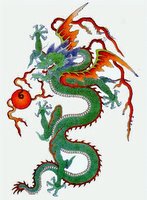
On Chinese Patchwriting (TGIF)
Chris Shei (University of Wales Swansea) wrote an interesting paper about plagiarism and the view of patchwriting by Chinese students studying in a UK higher education institution. Chinese culture emphasises a substantial period of imitating before creativity can be contemplated.
Read more here.
Below you will find an interesting fragment from Joel Bloch (Ohio State University) reviewing ‘Standing in the shadow of giants: Plagiarists, authors, collaborators’, from Rebecca Moore Howard in 1999.
“The issue of plagiarism among Chinese students has long been a controversial issue, both in terms of whether it is culturally bound and when and where it should be a concern. Unfortunately, Howard draws upon a number of sources that have oversimplified the issue, resulting in what I feel is a misrepresentation of how Chinese rhetoric actually view both intellectual property and plagiarism. However, patchwriting in Chinese rhetoric often involves texts that are clearly identifiable to every reader, so there is no question as to who the author is. When a Chinese writer cites Confucius, everyone knows it is Confucius. This situation is not necessarily the same as what Howard considers patchwriting in the West. Moreover, our research shows examples of how patchwriting has gotten Chinese writers into the same trouble as it does Western writers. We showed instances where Chinese writers viewed patchwriting themselves as an extremely negative form; students using patchwriting as a strategy to avoid saying anything controversial, which in certain historical periods was an extremely judicious rhetorical strategy. In these cases, the writers felt that this strategy was of little value except to avoid possible trouble.“
Read more here.
